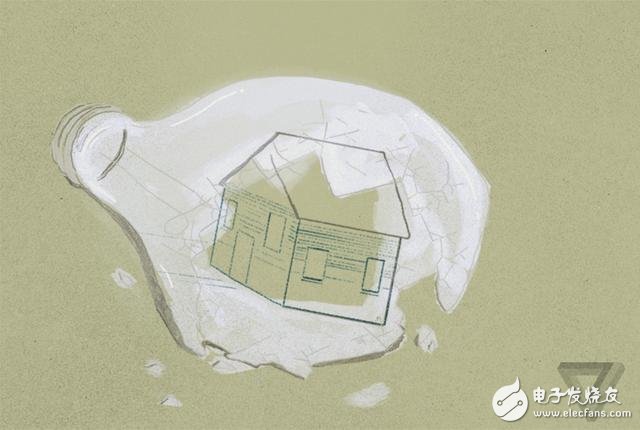The key to the development of smart home: to achieve the interconnection of different brands
Shane Dyer is surrounded by more than a dozen household appliances and devices, produced by different manufacturers. He holds a smartphone and operates each appliance in a stylish and elegant application: turning a series of light bulbs on or off, checking a smoke detector, and even adjusting the temperature of a refrigerator.
This is a scene of "smart home utopia", which looks simple, but it is out of reach in ordinary people's lives. Outside of this room, which Dyer has crafted, it is difficult for people to see such a sight in real life. Dyer is the CEO of Arrayent. Arrayent is one of the companies that have recently emerged to connect smart home appliances.

No uniform standard
For several years, appliance manufacturers have been trying to advance the pace of smart homes, but for some reason they have not made significant progress.
What is the status quo? It's a series of smart appliances, each with good features, but they can't work together unless they all come from the same manufacturer. For example, whether it is a refrigerator, an electric stove, a washing machine or a dryer, all are Samsung brands. When you buy a home appliance, you need to be so constrained. It is really not smart.
What a smart home really needs is that all home appliances use the same standard to communicate. This standard applies to smart appliances, just like WiFi for laptops, tablets and the Internet. But creating this standard is surprisingly difficult. What really traps global manufacturers is to set this standard and agree on it.
Right now, two names are at the forefront of connected homes: ZigBee and Z-Wave. The wireless networking technologies used by the two companies are similar, and both provide a language for devices to share relevant information (such as temperature, or whether a light is turned on or off) on their wireless network. However, although these two technologies have been supported by hundreds of products, they have hardly been recognized by big-name home appliance manufacturers.
Smart homes won't become smart until all big brands agree on the original language to make their products use the same language.
Z-Wave problem
Unfortunately, there is no indication that this issue will be resolved soon. Some senior executives in the industry believe that a dominant standard will not emerge.
Mark Walters holds this view. He is the chairman of the "Z-Wave Alliance." For the home, the Z-Wave product is a great choice: every local Z-Wave device can communicate with each other. But for manufacturers, it's not so beautiful: Z-Wave devices can't interoperate globally, and Z-Wave is not a truly open protocol.
Unlike WiFi, Z-Wave is a proprietary system that is produced and licensed by a company, which means it's successful and profitable. For now, this means that Z-Wave can tightly control how its devices communicate with each other – review each device to make sure it actually communicates with other products as envisioned. But Z-Wave may be so powerful, such as keeping prices high, controlling what the product can do and what it can't do.
ZigBee problem
The ZigBee Alliance claims that Z-Wave is not a true competitor because it is a proprietary system. Tobin Richardson, CEO of ZigBee, believes that there will still be a smart home standard that will dominate the rivers and lakes.
But ZigBee faces a major problem in order to become a standard: not all ZigBee products can communicate with each other at the moment. The ZigBee Alliance is studying this issue, and Richardson says it is getting closer and closer to solving it. The ZigBee standard has been in production for more than a decade, and while it is becoming more powerful, it sometimes becomes more clumsy.
Richardson is very optimistic about the prospects of smart home and ZigBee alliance. He said that the progress of people using connected devices has been slow so far, because the number of such appliances is still small, and the second is because it is not easy to grasp the way they are used. "But we have reached a critical point," Richardson said.
Sensor Dustbin Automatic Dustbin
Sensor Dustbin Automatic Dustbin,Automatic Sensor Recycling Dustbin,Stainless Steel Sensor Automatic Dustbin,Automatic Sensor Dustbin
NINGBO ZIXING ELECTRONIC CO.,LTD. , https://www.zixingautobin.com
